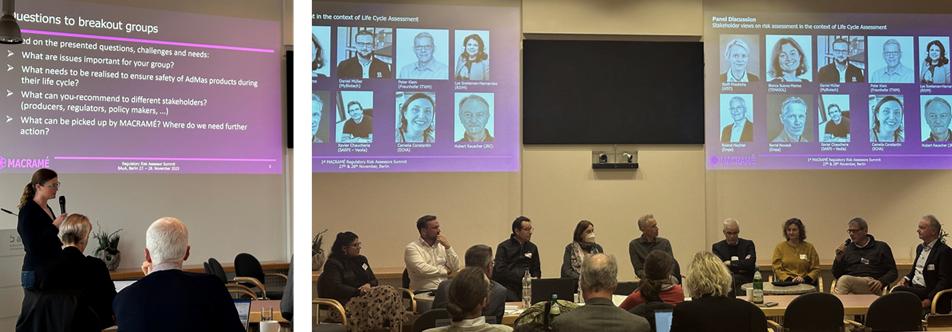BAuA is the German Federal Institute for Occupational Safety and Health. It is a federal departmental research institution dedicated to safety and health at work and human-centred work design. At its three locations in Dortmund, Berlin, and Dresden, nearly 800 staff members work at the intersection between science, policymaking, and practice. They conduct research and development projects, provide policy advice, perform statutory and official functions, and transfer knowledge into workplace practice. BAuA is a key player in the development of OECD Test Guidelines for nanomaterials and (other) advanced materials, as it co-chairs the Malta Initiative and coordinated the EU-funded coordination and support action project NanoHarmony.
The unit 4.I.5 Materials and Particulate Hazardous Substances investigates and evaluates occupational safety aspects of activities involving particulate hazardous substances such as nanomaterials and (other) advanced materials. The unit operates state-of-the-art equipment for aerosol measurement, particle analysis and correlative imaging methods to answer current questions relevant to occupational safety and health on particulate hazardous substances and advanced materials.
BAuA’s role in the MACRAMÉ Project
BAuA coordinates MACRAMÉ´s activities towards standardisation and harmonisation of method developments and is leading work package 5. Within this work package, BAuA organises together with LNE, BioMS, RIVM, Temasol, LIST and other MACRAMÉ partners the annual Harmonisation and Standardisation Workshop as well as webinars on topics like standardisation, validation and AOPs. The 1st MACRAMÉ Regulatory Risk Assessors Summit held at BAuA in Berlin (27th – 28th of November 2023) and organised by BAuA and BioMS in collaboration with other MACRAMÉ partners, marked a pivotal event in highlighting challenges, needs, and gaps in the regulatory frameworks important for the risk assessment during the life cycle of advanced materials and advanced materials-containing products (see Figure 1).

Using and expanding the expertise in correlative microscopy, BAuA is investigating MACRAMÉ samples with scanning electron microscopy, light microscopy and Raman spectroscopy combined with by BAuA developed software solutions for image correlation and neural-network-integrated image and spectra analysis. The harmonisation of correlative microscopy experimental procedures is performed within MACRAMÉ in collaboration with IBE and EMPA. A key challenge for the identification of advanced materials is to discriminate between the carbon-based background (e.g. cells) and the graphene related materials that are also carbon-based. As highlight in Figure 2 below, Raman spectroscopy correlated with light microscopy enables the clear discrimination.

Furthermore, BAuA develops and harmonises methods for targeted aerosol generation, especially of fibrous materials and graphene related materials. In MACRAMÉ, aerosols are generated and used for in vitro experiments in close collaboration with IBE, LIST and RIVM.






